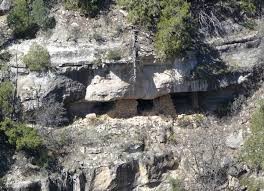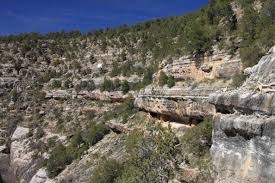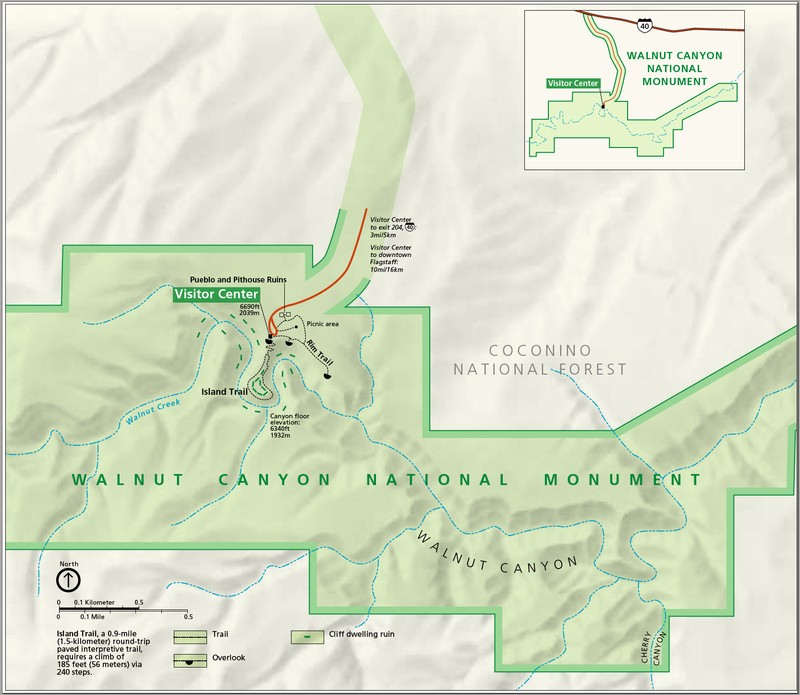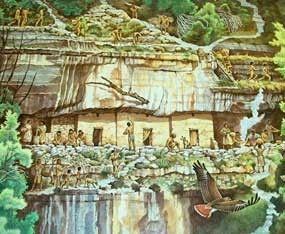Walnut Canyon National Monument
Introduction
Text-to-speech Audio
Images
Closer view of a cliffside dwelling

Numerous dwellings alongside the canyon

Map of Walnut Canyon National Monument

An artist's recreation of life in a Walnut Canyon cliff dwelling, by Michael Hampshire

Backstory and Context
Text-to-speech Audio
The Sinagua people who inhabited the Walnut Canyon National Monument mastered the ability to live in desolate, dry areas, and translated to English, Sanagua means “without water.” The Sanagua peoples lived in the area from around 600 to 1400 AD, though evidence and artifacts in the canyon suggests that Archaic peoples traveling the American Southwest occasionally inhabited the canyon. Between about 1125 and 1250 AD, the Sinagua built their homes under the Permian Kaibab limestone ledges, forming around 80 cliff dwellings. Closer to 1400 AD, they abandoned the area for unknown reasons. 1
Birth of the Walnut Canyon National Monument
Closer to the 1880s, railroad construction was taking place near the canyon and in the present-day park. The railroad brought hordes of souvenir hunters and others labeled as “pot-hunters.” These people used shovels and dynamite and ruined sacred grave sites and destroyed the alcoves, and this large-scale theft, vandalism, and outright destruction encouraged locals to preserve the canyon. Preservation efforts attracted national support, and in 1915, Walnut Canyon was labeled as a national monument under federal law to protect the area.2
The Civilian Conservation Corps later recognized Walnut Canyon National Monument and wanted to help protect this ancient beauty. The Organization in the 1930’s helped rebuild walls, offered tours, and protected the cliff where native families once lived. On October 15th, 1966, the monument was accepted into the National Register of Historic Places. Receiving more than 100,000 tourists each year, Walnut Canyon National Monument gives visitors a glimpse into the past as well as exploration of its pure natural beauty.
Getting Around the Park
There are not any campsites within the approximately 3600-acre monument and park, but most trips to view the cave dwellings and the canyon’s prehistoric beauty shouldn’t take more than a day. From the visitors center, visitors can discover two trails that allow for closer looks at the ruins. The first trail, considered to be the least exciting, is the 0.7-mile Rim Trail. The Rim Trail travels along the canyon’s rim and showcases a few scattered ruins, such as a restored pit house and the walls of a two-room pueblo.
The 0.9-mile Island Trail is much more popular, though it is also consider a bit strenuous as it steeply descends about 185 feet through a series of 240 steps. Because the monument rests at an elevation of 7,000 feet, climbing or descending these steps can be difficult. However, the trail passes about 20 separate dwellings, a few of which are still intact.3
